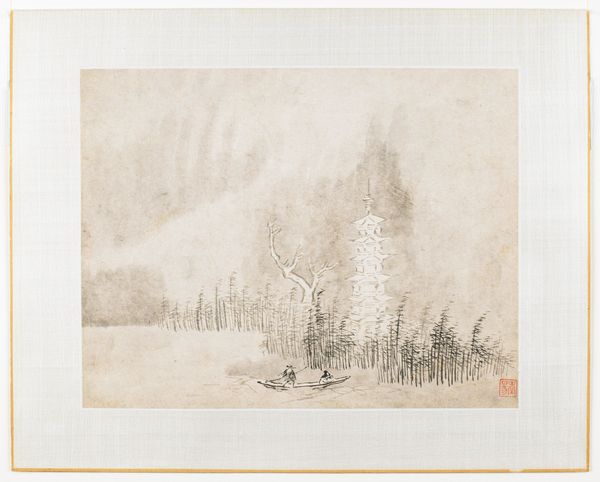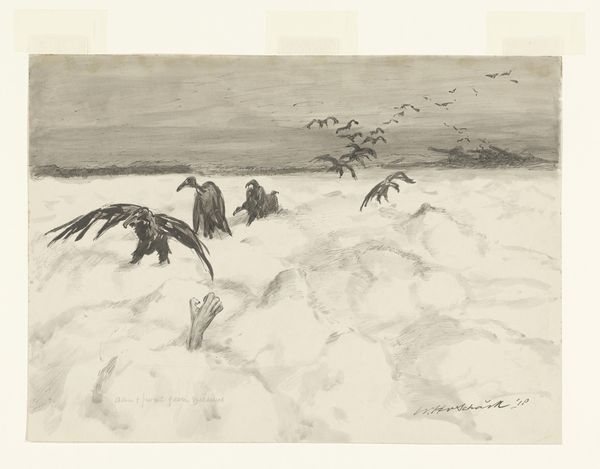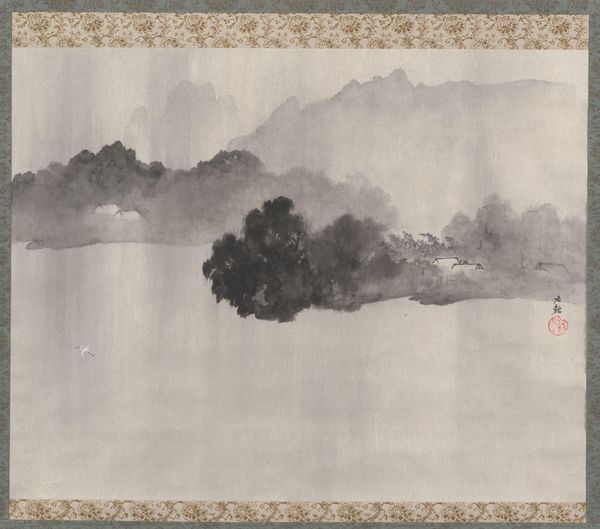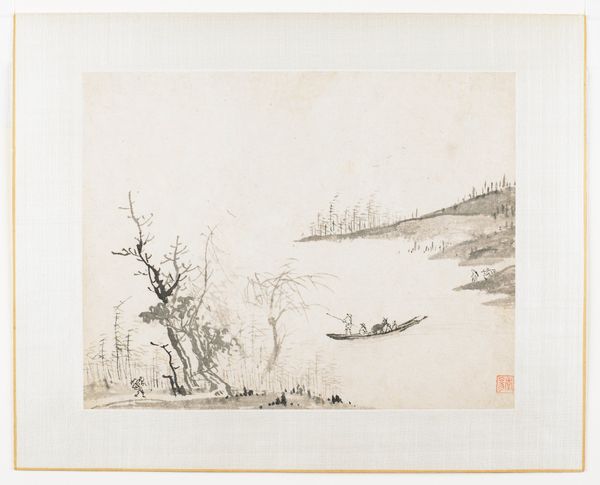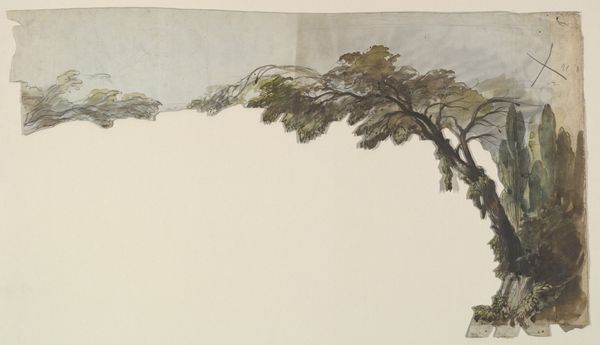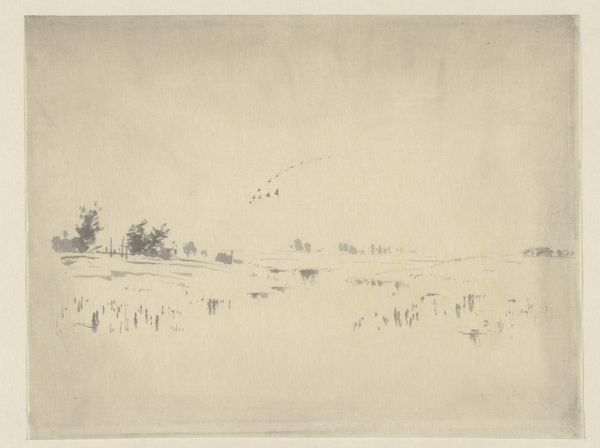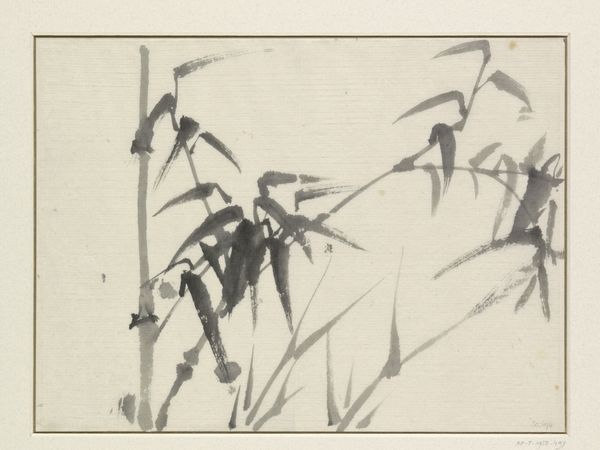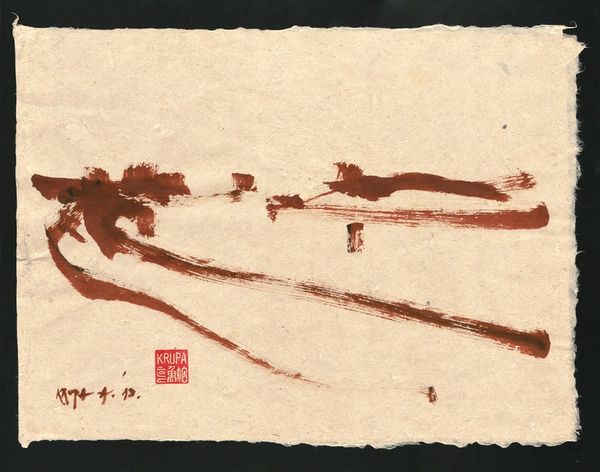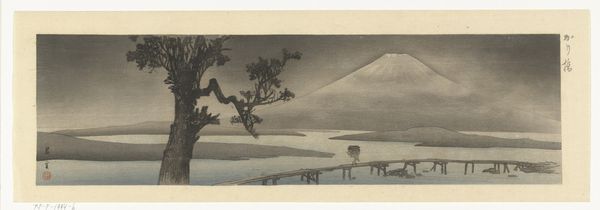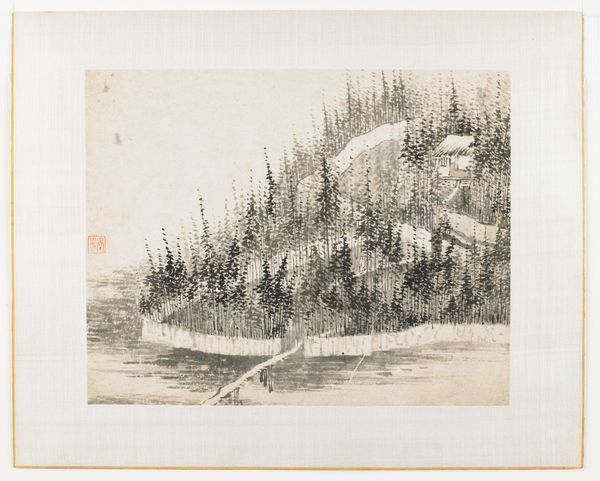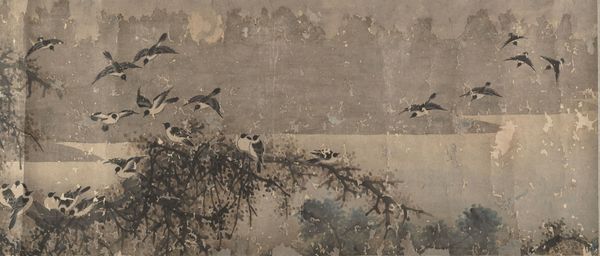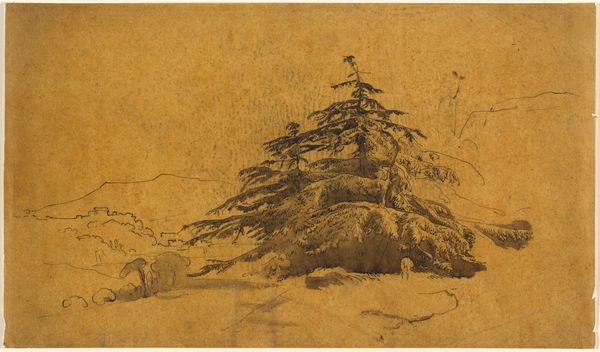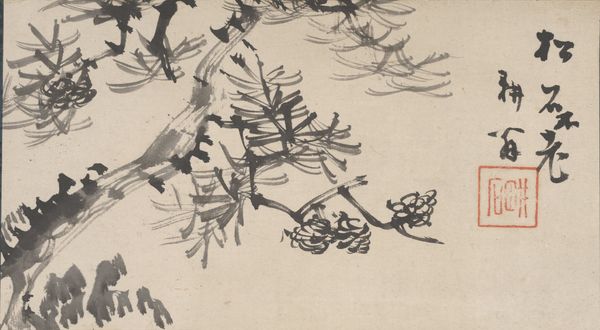
drawing, paper, ink
#
pencil drawn
#
drawing
#
pencil sketch
#
asian-art
#
landscape
#
bird
#
paper
#
ink
#
pencil drawing
#
forest
Dimensions: height 189 mm, width 222 mm
Copyright: Rijks Museum: Open Domain
Curator: This is "Vogels boven boslandschap", or "Birds above Forest Landscape," attributed to Prosper-Alphonse Isaac, though the precise date remains unknown, placing it somewhere between 1868 and 1924. It's a drawing using ink and pencil on paper. Editor: Immediately, I get this sense of melancholy. The subdued palette and those faint birds…it's like witnessing a memory fading. What catches your eye first? Curator: Well, it’s hard to ignore the stylistic resemblance to Asian art, which became highly sought after within European artistic circles during the late 19th century, fueled by increased global trade. This informed the art being shown and collected. Editor: True! There’s definitely a Zen-like minimalism here, with only what’s necessary. It's less about detail and more about evoking a feeling. Makes you wonder if Isaac ever travelled East, or was experiencing it all second-hand through magazines. Curator: Records don’t point to his travels east, so we're most likely seeing the impact of Japonisme—the West's fascination with Japanese art—through its widespread circulation in Parisian galleries. It transformed expectations in what defined fine art at the time. Editor: Speaking of influence, there's this almost deliberate amateur feel that adds to the piece’s authenticity. It's refreshing in a time where academic painting held such a tight grip, no? Like a private meditation, quickly captured. Curator: The "amateur feel", as you call it, complicates traditional views on artistic training. Works on paper, like this, held varying status; often seen as preliminary sketches yet still making their way into the museum to become the artworks we analyze today. Editor: A happy accident for us, indeed! For me it feels less a study and more of a fully realised emotion. That little broken fence along the waterline speaks volumes! A broken horizon of sorts! Curator: It prompts us to reconsider our understanding on skill, artistic intention and historical canon. By understanding those dynamics, this artwork gains another life altogether. Editor: Exactly! It is a ghostly haiku on paper. I see something new each time I glance back, which means this piece has thoroughly worked its magic on me. Curator: The piece certainly encapsulates its cultural and historical context. Perhaps its continued power lies in that blending of observation and affect, still so present.
Comments
No comments
Be the first to comment and join the conversation on the ultimate creative platform.
